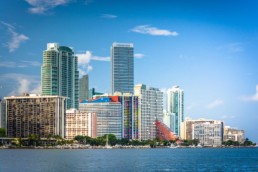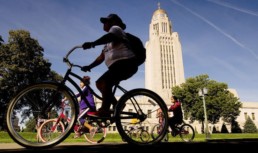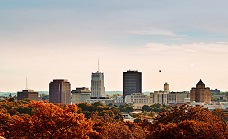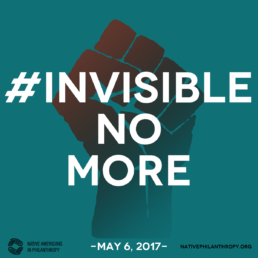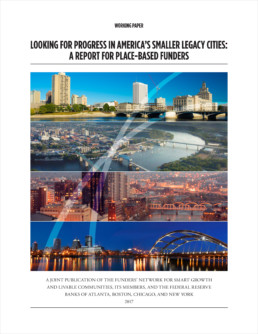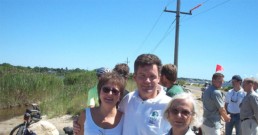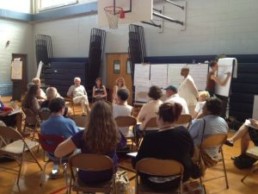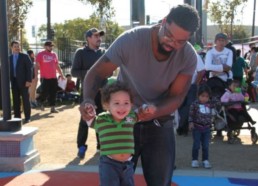Going PLACES: #StayWoke Philanthropy: Owning our role as the system
For years, I have escaped to the beaches of Miami, Florida as an outsider looking to steal some fun in the sun. But thanks to an immersive site visit with the 2017 cohort of PLACES fellows, I possess a greater appreciation and understanding of Miami as a place filled with a rich mix of history and culture unparalleled by any other city in the country. Our time in Miami made the most of my senses, whether it was during our emotional grounding exercise on the sunny shore of Historic Virginia Key where we got to know one another personally, or during our savory Caribbean lunch at Clive’s Cafe in Little Haiti.
Yet, despite the exposure to all things that make cities like Miami beautiful, it is difficult to gaze past the savage inequities that are still fracturing the city’s communities of color. All the things that make Miami a beautiful place could not mask the trend that we are all familiar with in our own cities, and it hit me like a sack of bricks as we passed through Miami’s Overtown neighborhood.
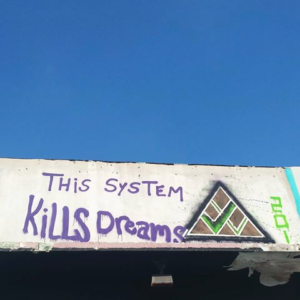 Historic Overtown, a once bustling center for black life and culture regarded as the “Harlem of the South”, sits just northwest of downtown Miami in the shadow of failed urban renewal policies. The construction of Interstate 95 during the 1960s, which runs directly through Overtown, ripped through the neighborhood and displaced thousands of residents. The project set off a trend of population decline that has spanned decades. As we passed through the community on a packed van on our commute to Little Haiti, tears fueled by anger and hurt began to fall as I realized that this neighborhood’s story is far too common: a historically black place crippled by policies that are designed to wipe away its entire existence. This has been the story in other major cities—Nashville, New Orleans and my home of Atlanta, just to name a few.
Historic Overtown, a once bustling center for black life and culture regarded as the “Harlem of the South”, sits just northwest of downtown Miami in the shadow of failed urban renewal policies. The construction of Interstate 95 during the 1960s, which runs directly through Overtown, ripped through the neighborhood and displaced thousands of residents. The project set off a trend of population decline that has spanned decades. As we passed through the community on a packed van on our commute to Little Haiti, tears fueled by anger and hurt began to fall as I realized that this neighborhood’s story is far too common: a historically black place crippled by policies that are designed to wipe away its entire existence. This has been the story in other major cities—Nashville, New Orleans and my home of Atlanta, just to name a few.
The anger grew as I realized that these development projects, reflecting billions of public and private investment, stand as monuments to structural racism and are painful reminders that people of color are repeatedly treated as disposable. This is still the case in 2017 as market pressures are encouraging developers and policymakers to rapidly gentrify cities while simultaneously displacing low-income residents and entire neighborhood-based institutions.
Later in the afternoon, we had a very timely discussion on strategies to disrupt the systems that act together to oppress communities like Overtown. And although philanthropy is actively addressing troubling patterns in the social sector, our call to action as fellows was to look for ways to dig deeper to address the root causes. Our facilitator, Bina M. Patel emphasized that the “problem with focusing on patterns is that you only change the scale or frequency of the pattern, rather than eliminating the pipeline - and this is not systems change”.
I had to take a moment here and ask: How seriously committed are we as funders in taking ownership of philanthropy’s role as a system that has historically perpetuated the very inequities it seeks to eliminate? In the case of development in places like Overtown, how long has philanthropy slept on the root causes that fuel displacement in communities of color, and what will it take for us to WAKE UP? We frequently heard that the “train has left the station” from some of the residents in Miami, suggesting that the development is happening too rapidly in the area and the system is too complex to disrupt. I may be oversimplifying the problem, but I don’t believe the rapid pace of gentrification is a cause for surrender. I believe philanthropy can play a significant role in the shifting power (dollars) that residents need to reclaim, protect, and determine the future of their neighborhoods.
I am now looking across the field to get a better picture of what share of philanthropic giving goes to supporting resident voices when compared to the amount of investment for physical development projects that fracture communities of color. These are the type of complex issues I look forward to untangling with other members of the ‘17 PLACES class. With equity as the priority for all of us, we recognize that philanthropy can’t really do systems change work if we don’t put people, especially people impacted by the broken systems we helped to create, at the center of all of our funding decisions.
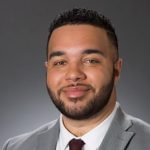 Alex Camardelle
Alex Camardelle
Program Assistant
Annie E. Casey Foundation
Alex is program assistant for the Annie E. Casey Foundation’s Atlanta Civic Site, where he supports a place-based effort to strengthen economic security for children and families. Specifically, he works with senior staff and grantees to promote policy and practice improvements that aim to achieve equity for low-income communities of color in Southside Atlanta. Alex also leads the design of a strategy for stronger place-based investments in youth and young adult engagement and grassroots organizing. Before joining Casey, he provided legislative research support for various government and nonprofit organizations including Atlanta Public Schools, the Southern Regional Educational Board, and Louisiana State University. Through research advocacy, grantmaking, and thought leadership, Alex has helped community-based organizations and public systems develop new ways for activating and advancing a social justice agenda for the populations they serve.
Alex is currently working on a Ph.D. in Policy Studies at Georgia State University where he studies the social, political, and economic dimensions of policies that impact neighborhoods of color in the South. He holds a Master of Public Administration degree from Georgia State University and a Bachelor of Arts degree from The University of Alabama.
New Partners for Places Grantees Announced!
Sustainability Efforts in 15 Cities Get $1.7 Million in New Funding
We are proud to announce that 15 cities across the United States will receive more than $1.7 million for sustainability efforts through the Partners for Places matching grants program — projects as diverse as supporting urban agriculture and reforestation, providing green jobs for low-income workers, and ensuring all residents benefit from their community’s environmental progress.
“Climate issues are people issues,” said Darryl Young, director of Sustainable Cities at The Summit Foundation and a TFN board member. “At the city scale, there’s meaningful work to be done jointly in the public and private sectors. These Partners for Places proposals are where people are rolling up their sleeves and building strong, sustainable towns that strengthen communities and improve lives.”
These sustainability efforts will take place in cities large and small, from South Florida to the Pacific Northwest Florida, focusing mostly on low-income areas. They include: Columbia, Mo., where an under-used 10-acre site in a low-income neighborhood will be turned into an urban farm and agriculture park; Newark, N.J., where efforts to promote healthier, more energy-efficient homes includes a pilot program targeting 6-year-olds exposed to lead; and Boulder, Colo., which will work with Latino-owned landscaping businesses to convert to eco-friendly equipment and develop workforce training programs in renewable energy and efficiency careers.
Partners for Places, led by TFN and our partners at the Urban Sustainability Directors Network, is a collaborative matching grant program that connects local government and philanthropy to invest in sustainability projects that promote a healthy environment, a strong economy and well-being for all residents.
In this most recent round of funding, Partners for Places will provide $455,000 to eight cities through our general grant program, which will be matched by the local funders. We want to thank our six investor foundations for their support of this important program: Bloomberg Philanthropies, The JPB Foundation, The Kendeda Fund, The New York Community Trust, The Summit Foundation, and Surdna Foundation.
“We know that public, private and philanthropic partnerships are key to helping the city to have the walkability, sustainability and safety necessary for vibrant neighborhoods,” said Lincoln Community Foundation President Barbara Bartle, whose foundation has committed to matching a $75,000 Partners for Places grant to implement the Nebraska city’s sustainability efforts, such as installing energy-efficient street lighting, creating bike lanes, and expanding community gardens.
Seven additional cities will receive $405,000 in funding from the pilot Partners for Places Equity Pilot Initiative, created to provide financial and technical support to a cohort of cities and their place-based foundation partners. This pilot, part of TFN’s ongoing commitment to equity and inclusion, is a way to help local efforts use an equity lens to advance sustainability and climate action. These grantees are also learning together, and sharing their insights with each other to advance their work. This two-year pilot program is supported by the generosity of The Kendeda Fund and the Kresge Foundation.
“Low-income communities and people of color are disproportionately harmed by environmental hazards and the effects of climate change,” said Diane Ives, fund advisor for The Kendeda Fund’s People, Place and Planet program. “We need to put equity at the heart of community-based sustainability efforts to ensure that everyone has a chance to live in a vibrant, healthy, resilient community regardless of their zip code.”
To date, Partners for Places has awarded more than $5 million across North America in this successful matching grant program, leading to more than $10 million in investments.
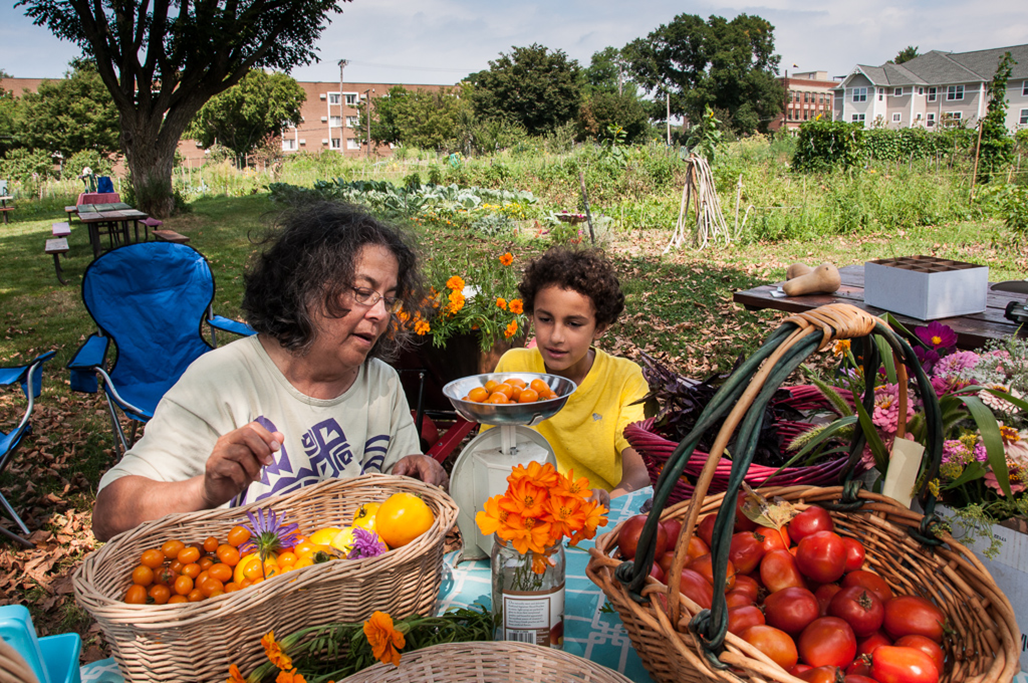
• Boulder, Colo. ($50,000): To build stronger and deeper representation of underserved communities in climate and energy decisions by facilitating dialogues with diverse stakeholders on community-defined priorities; piloting a renewable energy and energy efficiency workforce development program; supporting regional coordination on climate and equity, and generating metrics to guide data collection and evaluate progress. (Matching funder: Philanthropiece Foundation)
• Broward County, Fla. ($25,000): To support a sustainability education and youth leadership afterschool program in a distressed portion of the county that will teach high school students STEM skills, empowering them to become climate sustainability stewards and advocates to address their own neighborhood’s environmental challenges. (Matching funder: Community Foundation of Broward)
• Chicago, Ill. ($75,000): To better connect low- and moderate-income residents more easily to all of the “green” programs offered by the city, such as recycling, transportation, and energy efficiency, ensuring they can take advantage of the many tools and resources available to make their lifestyles more sustainable and help their household budgets go farther. (Matching funder: Chicago Community Trust)
• Columbia, Mo. ($100,000): To turn an under-used, 10-acre site in a low-income neighborhood into a multi-use agricultural park that will feature a farmers market, urban farm, outdoor classroom and green space. (Matching funder: Boone County Community Trust)
• Lincoln, Neb. ($75,000): To implement sustainability elements of a multi-year neighborhood planning process in a low-income neighborhood, such as improving walkability and pedestrian safety and providing green infrastructure, landscaping and urban reforestation, as well as increasing the size, number and potential of community gardens. (Matching funder: Lincoln Community Foundation)
• Newark, N.J. ($60,000): To develop and implement scalable strategies for promoting healthier, more energy-efficient homes in two target neighborhoods through a pilot program, targeting children under 6 years old exposed to lead. (Matching funders: Victoria Foundation; Greater Newark LISC; United Way of Essex and Hudson Counties; Essex Equities; PSEG Foundation)
• Syracuse, N.Y. ($25,000): To design and implement a comprehensive and inclusive outreach campaign that creates a unified vision for protecting and growing Syracuse’s urban forest. (Matching funder: The Gifford Foundation)
• Tacoma, Wash. ($45,000): To create an equitable and healthy food system that promotes healthy communities and people, supporting community members’ research and giving them the tools and resources to implement resilient food system ideas and projects. (Matching funder: The Russell Family Foundation)
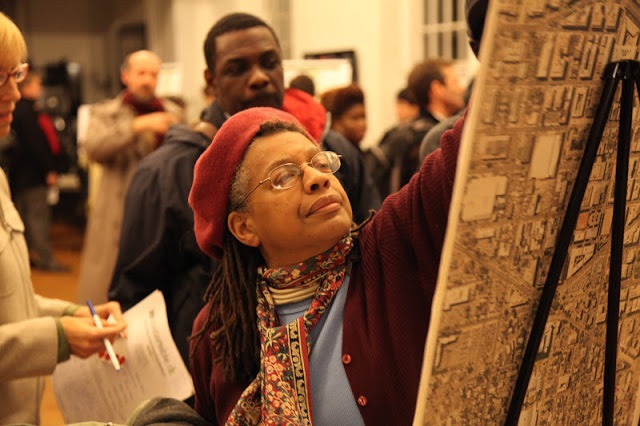
• Berkeley, Calif. ($30,000): To develop a “racial equity lens” tool that will include a set of questions that guide city policies and programs. The tool would be first used to incorporate racial equity into a community land-use planning process, and ultimately be applied to a broad range of programs and services. (Matching funders: The San Francisco Foundation; The East Bay Community Foundation)
• Charlotte, N.C. ($75,000): To create an accessible "smart city" platform where residents and government can kick-start collaboration on meaningful projects in categories that include healthy communities, neighborhood transportation, technology training programs, and smart homes and neighborhoods. (Matching funder: Knight Foundation; OrthoCarolina Foundation)
• Cleveland, Ohio ($60,000): To help improve outcomes in health, access to green jobs, and resiliency through equitable climate action planning and implementation, including workshops in 10 neighborhoods previously under-represented in sustainability efforts. (Matching funder: George Gund Foundation; Cleveland Foundation)
• Dubuque, Iowa ($50,000): To ensure city departments and partners learn strategies and have the tools needed to put climate-vulnerable communities at the center of decision-making and planning. The project will engage partners throughout the Washington Neighborhood to build non-profit capacity and social resiliency. (Matching funder: Community Foundation of Greater Dubuque)
• Minneapolis, Minn. ($75,000): To work with community members and organizations to implement a Green Zone pilot project that will address racial equity, improve health, and support economic development using environmentally conscious efforts in a community that faces the cumulative effects of environmental pollution and social, political and economic vulnerability. (Matching funder: McKnight Foundation)
• Providence, R.I. ($55,000): To incorporate racial equity as a core pillar of the city’s sustainability efforts, including additional training and tools that will support long-term goals specific to environmental and racial justice. (Matching funder: Rhode Island Foundation)
• Washington, D.C. ($60,000): To establish an equity advisory group of community residents from the Watts Branch neighborhood in order to bring equity and social cohesion into planning and implementation of the District’s climate adaptation and mitigation initiatives through a community-driven process. The project will produce a replicable model for authentic community engagement to be used in future planning efforts. (Matching funders: The Prince Charitable Trusts; Morris and Gwendolyn Cafritz Foundation)
Partners for Places will open a new round of funding for the general grant program during the first week of June, with proposals due in late July 2017. To attract additional interest in urban sustainability projects, the program also houses an Idea Bank on the Funders’ Network website, which provides summaries of past project applications.
For more information on Partners for Places, visit the Funders’ Network website at https://www.www.fundersnetwork.org/partnersforplaces/
Top photo: Lincon, Neb., received funding through Partners for Places to help sustainability efforts, such as improving walkability and pedestrian safety. [Photo Credit: Lincoln Community Foundation.]
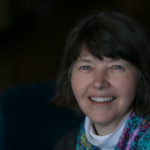 About the author: Ann Fowler Wallace is director of programs for the Funders' Network.
About the author: Ann Fowler Wallace is director of programs for the Funders' Network.
Looking for Progress: Exploring the Connection Between Economic Growth and Opportunity
"This piece raises important issues around how to ensure that urban revitalization efforts are equitable and sustainable in smaller legacy cities and beyond. As more communities recover from the Great Recession, these questions will become increasingly important in ensuring long-term growth and prosperity," writes Torey Hollingsworth in a recent blog post for the Greater Ohio Policy Center.
 About the author:
About the author:
Torey Hollingsworth is manager of research and policy for the Greater Ohio Policy Center, a non-profit, non-partisan organization based in Columbus and operating statewide, which develops and advances policies and practices that value urban cores and metropolitan regions as economic drivers and preserve Ohio’s open space and farmland. Through education, research and outreach, GOPC strives to create a political and policy climate receptive to new economic and governmental structures that advance sustainable development and economic growth.
On Self-Care and Resiliency in Racial Equity Work
Bina M. Patel of Saathi Impact Consulting and former PLACES fellow shares some brief tips on doing racial equity work from her module at the PLACES alumni gathering at The Funders’ Network 2017 Conference in Saint Paul, Minneapolis.
The point of self-care is to create the conditions for you to continue taking action towards progress everyday – to keep coming back. Self care is about creating resiliency in service of a greater good.
-Bina M. Patel
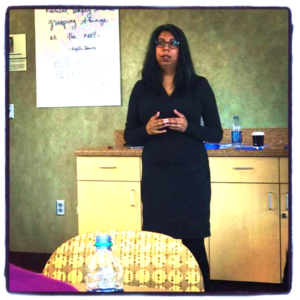 1. Be mindful of the space: Do you sit at a table with leadership at the front? Could you disrupt the power setup with a circular table or a different space that can disrupt the centered whiteness paradigm? This is a simple way to breakdown the power dynamic that most of us experience when we walk into a room or meeting. Another simple way is to ask ourselves, “How do we respond to emails or to those speaking up in meetings? Could we respond in a way that does not perpetuate systems of power? Also, am I perpetuating systems of power myself with how I interact and work with those around me?” While practicing compassion and self-care is imperative, it is also crucial not to normalize or enable inequity and racism—and this includes not only questioning those in power, but ourselves.
1. Be mindful of the space: Do you sit at a table with leadership at the front? Could you disrupt the power setup with a circular table or a different space that can disrupt the centered whiteness paradigm? This is a simple way to breakdown the power dynamic that most of us experience when we walk into a room or meeting. Another simple way is to ask ourselves, “How do we respond to emails or to those speaking up in meetings? Could we respond in a way that does not perpetuate systems of power? Also, am I perpetuating systems of power myself with how I interact and work with those around me?” While practicing compassion and self-care is imperative, it is also crucial not to normalize or enable inequity and racism—and this includes not only questioning those in power, but ourselves.
2. Bring compassion: One of the best tools to bring to the “table” is compassion. You are not being asked to get into the head of an aggressor, , but you can intentionally bear witness to their story—from a safe distance. Humanizing those around us builds bridges of honest dialogue. It is not necessary to self-traumatize for the sake of empathy. It is in the practice of not “othering” the aggressor that we allow ourselves to not to engage in their narrative, but also disrupt the power dynamic.
3. Generosity: Generosity is the spark for empathy. Find moments where you can be more generous—with yourself and with others. Invest in starting conversations versus making statements. Remember to give how you can in that moment—not how you are expected to or even sometimes how you would want to but cannot. It is also ok to be generous with yourself and take a moment to process information or a situation. In trying times, it is important that we find ways to replenish our empathy cup. It is what allows us to humanize others.
4. Self-care: Self-care is creating conditions for you to take repeated action. Resliency is the ability to keep going back to do the work. Resiliency is gained by purposeful self-care. This includes broader practices like having a supportive community and an equity toolkit at your disposal to individual practices like sleeping well, practicing mindfulness and meditation, and saying no when you need to. Self-care is different for every individual, but it is necessary for all. This also means acknowledging trauma responses such as fear, guilt, complaining, disassociating, and vices for what they are.
5. Choice Points: We make lots of choices, some that continue our complicity in the system. Looking our own choices allows us to be intentional about making different decisions that move us closer to equity – in big and small ways. A critical part of making choices towards equity is RISK. First, assess the situation. Then, try to manage the risk with equity tools and relationships, then, try to mitigate by finding new alternatives. Also, ask, why are we making certain decisions? What are the results we want? What is the mission? Do we have metrics and reasons behind our decision making and practices? Is is aligned to our equity principles?
In closing, wise words from Audre Lorde: “Caring for myself is not self-indulgence, it is self-preservation, and that is an act of political warfare.”
We look forward to sharing more tips and insight on doing racial equity work in 2017 through upcoming learning calls, blog posts, and social media. We invite you to join us on this shared learning experience. Stay tuned!
Looking for Progress: How Cedar Rapids is Connecting Growth and Opportunity
As part of our ongoing work exploring the lessons and recommendations offered in Looking for Progress in America's Smaller Legacy Cities: A Report for Place-based Funders, we asked some of the participants in the study: How has revitalization proceeded in your community, and how might your foundation and local partners ensure that economic growth and economic opportunity develop in a coordinated fashion? Dr. Les Garner, Jr., president and CEO of the Greater Cedar Rapids Community Foundation, shares his thoughts:
The Looking for Progress report highlights the observation that revitalization in smaller legacy cities seems to move along two distinct paths: an “arc of growth,” traditionally seen as the purview of business, economic development commissions, and chambers of commerce, with the support of government; and an “arc of opportunity,” often seen as the responsibility of workforce development and K-12 educational systems, with the support of social service organizations.
In Cedar Rapids, we have recognized that revitalization must proceed in a way that ensures both economic growth and opportunity growth. Creative Corridor Rising, our current regional planning effort, is designed, in part, to bring the two arcs together.
The regional planning process has always included stakeholders invested in both the economic growth arc and the opportunity growth arc. Leadership of the process includes the business and economic development communities, higher education, our council of governments and the charitable sector as represented by the United Way of East Central Iowa and the Greater Cedar Rapids Community Foundation. Public education and area nonprofits have been at the table from the beginning.
The plan will address regional workforce development and issues of community development as well as regional economic development. The regional approach is critical in planning for the economic growth arc. As we consider those sectors that are most likely to experience rapid economic growth, we are searching for ways to merge intellectual capital from the University of Iowa with the manufacturing and production abilities of Cedar Rapids.
The arc of opportunity will certainly, but not exclusively, be addressed in the workforce development and community development sections of the plan. Issues under current discussion include removing barriers to workforce participation, enhancing affordable housing, and improving transportation. Issues related to early childhood and education achievement are being addressed, as are issues related to diversity and economic, social and cultural inclusion.
As a place-based funder, the Greater Cedar Rapids Community Foundation recognizes the important role that local nonprofits play in supporting both arcs. Many nonprofit organizations have adopted innovative approaches to addressing important components of the growth and opportunity arcs, including job training, family stability, affordable housing, health care, micro lending and the development of core neighborhoods. Along with other funders, we need to serve as a convener for conversations designed to pinpoint critical missing program elements and find the best way to use our limited resources and leverage private philanthropy to achieve a prosperous and equitable community.
A good example of the opportunities we will seek as the planning process proceeds is the work currently underway in the Wellington Heights neighborhood of Cedar Rapids. Wellington Heights is a core neighborhood that was, several years ago, considered to be at the “tipping point” of instability. Four Oaks, a family services agency, decided to focus energy on the neighborhood through its Total Child initiative. Total Child made the commitment to work with children from youth to adulthood and to support families through a variety of interventions, including making major investments in stabilizing housing in the neighborhood, an effort supported by other agencies including Habitat for Humanity. Jane Boyd Community House, an affiliate of Four Oaks, initiated the Paths Program to provide job training, coaching and advocacy for parents who faced barriers to entry into the workforce. It has subsequently partnered with corporate partner Go Daddy to establish a neighborhood-based entrepreneurial development program. The entrepreneurs who complete this program will find opportunities for financing through MICRO, the City’s micro lending program targeted to core neighborhoods. The Community Foundation convened the partners to establish MICRO, which is funded in part through private contributions. It has also funded Total Child and the Paths program. It will continue to seek such opportunities to help its nonprofit partners provide more comprehensive support for economic inclusion.
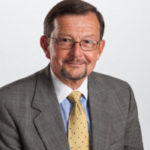 About the author: Dr. Les Garner, Jr., is president and & CEO of the Greater Cedar Rapids Community Foundation.
About the author: Dr. Les Garner, Jr., is president and & CEO of the Greater Cedar Rapids Community Foundation.
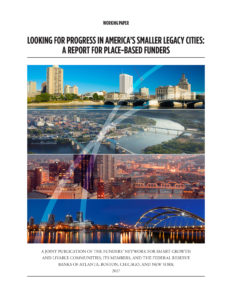 Looking for Progress in America's Smaller Legacy Cities: A Report for Place-based Funders
Looking for Progress in America's Smaller Legacy Cities: A Report for Place-based Funders
As part of The Funders’ Network-Federal Reserve Philanthropy Initiative, the Federal Reserve Banks of Atlanta, Boston, Chicago, and New York recently released, in partnership with The Funders’ Network, a whitepaper presenting findings from a four-city study tour of older, legacy cities. This blog is the second in an occasional series stemming from that report. The full report can be downloaded here.
Main photo credit: Iowa's Creative Corridor.
Invisible No More: Native Movement Building
Native Americans in Philanthropy (NAP) and more than 150 allies will gather in Los Angeles on May 6 for our Invisible No More: Native Movement Building summit and celebration. This event, held at the enigmatic L.A. cultural outpost The Underground Museum, will bring together national and global movements to discuss youth advocacy, narrative change strategies, and lessons from Standing Rock. We’ll also focus on best practices, and other major issues and innovations in Native American communities and across movements.
The issues and unique sovereign rights of Native Americans are often ignored or excluded, even in "woke" circles and spaces. The movement first sparked by Standing Rock has created a Ferguson-like moment for the Native American community.
NAP has been a consistent advocate for the protection of tribal sovereignty, land and water rights, and Native youth healing, by partnering with the Standing Rock Sioux Tribe and My Brother's Keeper, as well as building cross-movement advocacy efforts. NAP has also focused its work toward carrying on the Obama administration's legacy through Generation Indigenous (#GenIndigenous), an initiative first started by President Barack Obama in 2014. #GenIndigenous continues to encourage Native American youth to continue to draw on their Indigenous cultures, experiences and worldview as tools for social change.
Grounded by a "Movement of Movements" theme, this event on May 6 will shed light on the issues that affect us all, making them #InvisibleNoMore. Critical conversations will also highlight ways in which partners can collaborate and use social capital to support community-led solutions. Panels and breakout sessions will cover movement-building partnerships, youth advocacy, healing, mass incarceration, and more. This event will highlight our #GenIndigenous Regional Convenings amplifying work of non-profits serving native youth. (The next convening will be held in Seattle on April 28 with fall convenings scheduled for Southern California and Southwest regions.) The event will also support NAP’s #GenIndigenous Response Fund which provides grants to youth organizing groups responding to the current moment in ways that build long-term power for Native youth. Donations made to the fund will launch the first ever #GenIndigenous Virtual Giving Circle.
NAP believes there is no greater time for allies to add their voices to the movement than now, and is proud to join forces these allies to honor the spirituality, resiliency, voices, and priorities of Native Americans, especially in such a challenging socio-political environment:
- Dr. Bob Ross, president and chief executive officer for The California Endowment, established to address the health needs of Californians (and which is also a member of The Funders’ Network)
- Taboo of the Black Eyed Peas
- Twila True, founder of True Family Enterprises and the True Sioux Hope Foundation, which assists the people of the Pine Ridge Reservation by providing critical aid and support for the creation of a sustainable infrastructure
- Actress and activist America Ferrera
- Activists and philanthropists Max and Vicki Kennedy
- Ty Stiklorius, president and CEO of the entertainment firm Friends at Work, which supports culturally transformative artists and initiatives
- Ernie Stevens, Jr., chairman and national spokesperson for the National Indian Gaming Association (NIGA)
- Holly Cook Macarro, a partner in Spirit Rock Consulting and former director of the Office of Native American Affairs for the Democratic National Committee
If you are interested in learning more or attending this event, please contact NAP at events@nativephilanthropy.org.
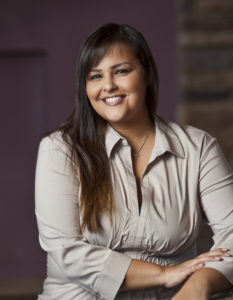 About the Author: Jennifer Fairbanks is a communications specialist for Native Americans in Philanthropy, a membership-based organization that promotes reciprocity and investment in, with and for Native peoples to build healthy and sustainable communities for all.
About the Author: Jennifer Fairbanks is a communications specialist for Native Americans in Philanthropy, a membership-based organization that promotes reciprocity and investment in, with and for Native peoples to build healthy and sustainable communities for all.
About this blog post: TFN is proud to celebrate and share stories and items of interest that are important to our funders and the broader philanthropic community. If you are interested in submitting an item to our blog, please contact TFN Communications Director Tere Figueras Negrete.
Looking for Progress in America's Smaller Legacy Cities: Takeaways & Tools for Place-based Funders
Place-based funders can play an important role in connecting economic growth to opportunity.
What began as an inquiry into four small legacy cities – Chattanooga, Tenn.; Cedar Rapids, Iowa; Rochester, N.Y.; and Grand Rapids, Mich. – that appeared to have experienced some measure of revitalization in the post Great Recession environment, evolved into an understanding that the places are moving along two distinct paths: an “arc of growth” and an “arc of opportunity.” In the context of these small legacy cities, growth and opportunity unfold simultaneously along these two long-term and distinct “arcs” leading to the conclusion that broad community prosperity lies in (1) recognizing that growth alone does not naturally lead to opportunity and (2) advancing deliberate policies, investments, and programs that connect growth to opportunity.
Looking for Progress in America's Smaller Legacy Cities: A Report for Place-based Funders looks at four cities and how place-based funders are helping in post-recession economic recovery. (Download the full publication here.)
Five Takeaways
Given the common narratives emerging from the study tour and the dual arcs framework for evaluating place-based revitalization, participants in the tour put forward a short, non-exhaustive, list of conclusions for funders:
1. Patient capital builds local capacity: The time horizons of community revitalization require capital that seeks both social impact and financial return over a longer-term. Place based funders are uniquely positioned to address the long time horizon that this work dictates, and the resources they control may be critical aspects in its acceleration or deceleration.
2. State policy often limits the flexibility and authority of local leaders to connect the arcs of growth and opportunity: Funders can take an active role in identifying those policy bottlenecks or opportunities that facilitate more positive local action toward connecting growth to opportunity. Place-based funders can be catalytic change agents for both policy and practice without engaging in lobbying.
3. Jurisdictional authorities dictate policy to connect the growth and opportunity arcs: The levers of power and resource allocations accorded to any number of public or pseudo-public authorities have a significant, often negative impact on the efficacy of efforts to connect the dual arcs. Funders can take an active role in helping to identify and break down or circumnavigate local jurisdictional boundaries that prevent positive action and facilitate alignment toward common goals.
4. Effective marketing and communication advances positive momentum: Maintaining a steady cadence on the long-term mission of community revitalization often falls to place-based leaders. In most cases, the community foundation or another place-rooted funder had a role in funding or otherwise supporting the narrative of a community’s recovery, articulating a common, inclusive vision of what is possible.
5. Accountability is the lynch pin for connecting the arcs: Cities around the country (including the four visited) have revitalized in various ways over the last several decades. But benefits of that growth have left many behind. Place-based funders should be strategic in holding local stakeholders accountable for connecting the growth and opportunity arcs.
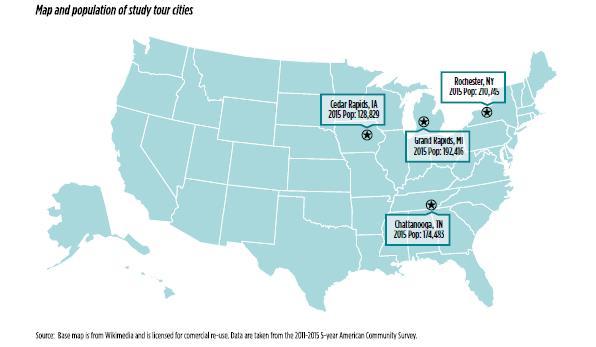
Helpful Tools
Despite the challenges of connecting the arcs, multiple tools or approaches in which the local place-based foundation played a lead role as a funder, convener or ‘steward’ of the effort that may be valuable to other communities were noted. These tools were observed within a local context, and were often part of a broadly articulated plan or vision. While tools are helpful, the environment in which they are most likely to succeed is also important.
• Addressing concentrated poverty by place: Interventions in this category were geographically targeted, but multi-faceted and cross-generational. Stressed communities that were located near resources – perhaps transportation or a good school – were seen as good places to start.
• Addressing concentrated poverty through policy: Interventions in this category were explicit in channeling more gains from growth to opportunity, through local policy either by removing barriers or being prescriptive in the intentional distribution of benefits.
• Revitalizing downtown with greater attention to preserving and increasing affordable housing: While investments in making communities more attractive by building downtown entertainment or “innovation” districts and increasing desirable amenities has increased property values and living costs, cities are facing the need for more affordable, family friendly housing options near emerging employment opportunities.
• Business recruitment led by business retention: Community economic growth strategies focused on strengthening existing businesses by recruiting businesses in their supply chain, placing retention and success of existing business as a higher priority than traditional recruitment alone. Coordinated workforce development was often key to this strategy.
• Develop leaders: Concern exists about where the next two generations of leaders will come from and how they will support broad-based collaborative efforts. Strong leaders in business, government and non-profits, are critical to building a regional approach to both arcs.
• Data collection: Data has played an important role in many of the cities visited. Data should be publicly available and granular enough to support neighborhood level understanding as well as robust enough to present an aggregated, comprehensive city – or MSA-wide -- profile.
Local dynamics dictate the timing, sequence, and particularities of the interplay between growth and opportunity strategies. Revitalization efforts that recognize the dual arcs and plan for their meaningful integration are more likely to yield robust and lasting long-term results. Because place-based funders are so integrally linked to the history and prospects of the communities they serve, they have unique roles and responsibilities not only as funders, but as local institutions and innovators to make these linkages across place and time.
About the Authors
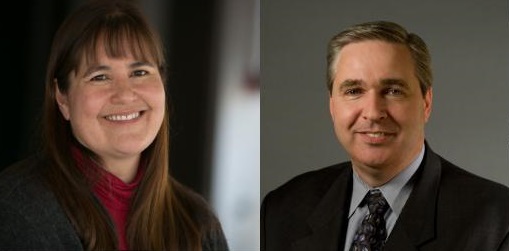
Alicia Kitsuse is Director of TFN's Older Industrial Cities Program.
Jeremiah P. Boyle is Managing Director of Community and Economic Development for the Federal Reserve Bank of Chicago
Looking for Progress in America's Smaller Legacy Cities: A Report for Place-based Funders
The Federal Reserve Banks of Atlanta, Boston, Chicago, and New York recently released, in partnership with The Funders’ Network, a whitepaper presenting findings from a four-city study tour of older, legacy cities.This blog is the first in an occasional series stemming from that report. Future installments will reflect the views of some of the place-based funders that collaborated with Federal Reserve staff in the study tour visits and the subsequent report. This initial blog features, as background, the executive summary of the report. The full report can be downloaded here.
Remembering David Burwell, Transportation Visionary
IN MEMORIAM: David G. Burwell 1947-2017
David Burwell served as policy advisor for TFN’s Transportation Reform Funders Group from 2009-2013.
We lost David Burwell on Feb. 1 to a three-year battle with cancer. He was 69 and, as many of you know, was a founder of Rails to Trails and later served as transportation advisor to TFN for several years.
I had the great good fortune of working side-by-side with David, leading TFN’s Transportation Reform Funders’ Group (TRFG) from 2009 to 2013. David was tireless, helping funders understand what was at stake on transportation issues and how to become engaged. He spent most of his life successfully demonstrating why transportation is like air: It affects everything.
David had a rare combination of qualities. On the one hand, he was playful and wry. On the other hand, the man was thorough and dogged. I seriously doubt he ever took a day in which he simply did nothing. He was a lawyer by training, with an attorney’s eye for deep detail. He was a teacher by instinct, able to put a human face on transportation issues -- starting with his contribution to the 1970s book, The End of the Road: A Citizen’s Guide to Transportation Problem-solving. Long before it was common to view transportation infrastructure as a divider of race and class, David explained what 1960s highway construction actually meant for people, communities and race relations. The Rails to Trails Conservancy, of which David was a co-founder, called him a visionary, noting the "the world lost a passionate conservationist and environmentalist."
His engaging style and passion hooked many a young advocate on transportation policy, including my husband, James Corless. I first met David in 2004 and I had good reason to dislike him from the outset. David flew from D.C. into Oakland, where James and I lived. The three of us went to dinner. He explained calmly and rationally that James, then a transportation advocate in California, was needed in Washington for a temporary policy gig. Could he please start the next week? I was aghast. James and I were engaged to be married (in California!) and all I could contemplate was that living apart was not part of my marital plans.
That evening, David did what David did best: He made me feel really good about doing the right thing for the cause, even if that meant sending my fiancé 3,000 miles east. Eventually, James returned, we were married, had kids and – voila! – four years later, David came calling again. At another dinner in Oakland, David again wanted to know: Would James move to D.C. again, this time for good? There was a new group called Transportation for America and James was needed …
Sprinkled by that fairy dust only David possessed, James and I said, “We’re in!”
The rest is history. I later had the privilege of working with David as advisors to TFN’s Transportation Reform Funders Group (TRFG), where his enthusiasm and deep knowledge helped many funders see how transportation affected the issues about which they cared.
I was looking through my emails recently to find some examples of David’s knack for writing about dense policy details with catchy, understandable language. To wit, some TRFG quotes from Mr. Burwell:
• “It was a very good piece of legislation, except it was mugged at the finish line.”
• Of another legal effort, he wrote: “Well, the best we can say about this bill is that the Wall Street Journal doesn't like it either – for a very good reason -- because it doesn’t explain where the money comes from…”
• And later, mindful, as ever, that proposed laws are only improved when shaped by outside voices, he wrote: “The best news is that the reform coalition and its 400+ partners were a real force to be reckoned with in this bill….”
I am sure that somewhere in the dictionary, under the phrase, “brilliant mensch,” there is a picture of David Burwell. There is a smile on his face, and in his hand is a book about transportation. From his lips spring funny, erudite words explaining why you, dear listener, ought to get involved in the transportation fight right now.
Ride the train in peace, dear David. We will miss you more than we can say.
Photo: David Burwell with his wife Irene and mother Barbara in 2002 | Courtesy Rails-to-Trails Conservancy
How Can Philanthropy Help Disaster Relief and Recovery?
For the past two years, TFN and the Center for Disaster Philanthropy have been involved in an exciting regional effort to strengthen community foundations in their knowledge of disasters and to empower their leadership in this arena.
The Philanthropic Preparedness, Resiliency & Emergency Partnership (PPREP) program is directed at seventeen community foundations from a ten-state area in the Midwest, along the Missouri River. This year, PPREP welcomes additional community foundations from the area to the program, with the continuing support of the Margaret A. Cargill Foundation.
Kimberlee Maphis-Early, senior associate at the Center for Disaster Philanthropy, shares some of the practical resources PPREP provides in this CDP blog post.
Funders Help Bring Windfall For More Urban Parks in Los Angeles
When the Los Angeles City Council voted to change how it collects fees from developers for parks for the first time in 30 years on September 7, it was a huge victory for urban parks advocates – with funders playing a critical behind-the-scenes role in the “Parks for All” campaign.
Los Angeles has had a chronic shortfall of funding to create urban parks, especially in low-income communities, for decades. Though the state’s 1975 Quimby Act authorizes cities and counties to pass ordinances requiring that developers set aside land or pay fees in lieu of a set-aside for parks or recreational facilities, Los Angeles’ ordinances were written in a way that constrained Quimby’s potential to bring parks to where they are needed the most. An excellent editorial by the LA Times details these limitations. And the statistics are sobering: 41 percent of lower-income households in Los Angeles do not have immediate access to a park (versus 2 percent in New York). Los Angeles is ranked 65 out of 100 of the nation’s largest cities in terms of how well the city is meeting the need for parks.
Several funders who are part of the Los Angeles’ Funders Collaborative, an initiative of Smart Growth California, were frustrated by the situation – especially since parks are such an essential piece of creating healthy, equitable, and sustainable communities. A member of the Los Angeles Funders’ Collaborative steering committee, The Rosalinde and Arthur Gilbert Foundation, stepped up to bring together four funders who wanted to collaborate in moving the needle on Quimby reform.
This evolved into an effort that showcases what funders working together do so well and the critical role they can play. Funders supported research that produced evidence supporting the Quimby reforms, ensured that the LA Department of City Planning convened diverse organizations to talk about potential solutions, and facilitated connections between advocates who hadn’t historically worked together. Together, these supportive efforts added key momentum to Quimby reform.
It is ultimately the incredible work of the 68 “Parks for All” coalition partners – including the Los Angeles Neighborhood Land Trust, NRDC (Natural Resources Defense Council), Community Health Councils, Prevention Institute, TRUST South LA and Pacoima Beautiful – who brought the changes to the Los Angeles’ Quimby Act ordinances to life through a multi-year campaign. These changes mean that funding for creating parks should double from around $20 million per year to nearly $50 million, and ensure that moving forward, new development pays for new parks.
The impact this will have on the livability of Los Angeles cannot be underestimated, especially for low-income communities and communities of color. Many thanks to everyone who was part of the Parks for All campaign and to the funders who took philanthropic leadership to exciting new places.
Are you a funder who wants to create healthy, equitable, and sustainable communities in Los Angeles County? Learn more about the Los Angeles Funders’ Collaborative.
Many thanks to the Los Angeles Neighborhood Land Trust for sharing the photos included with this blog.

